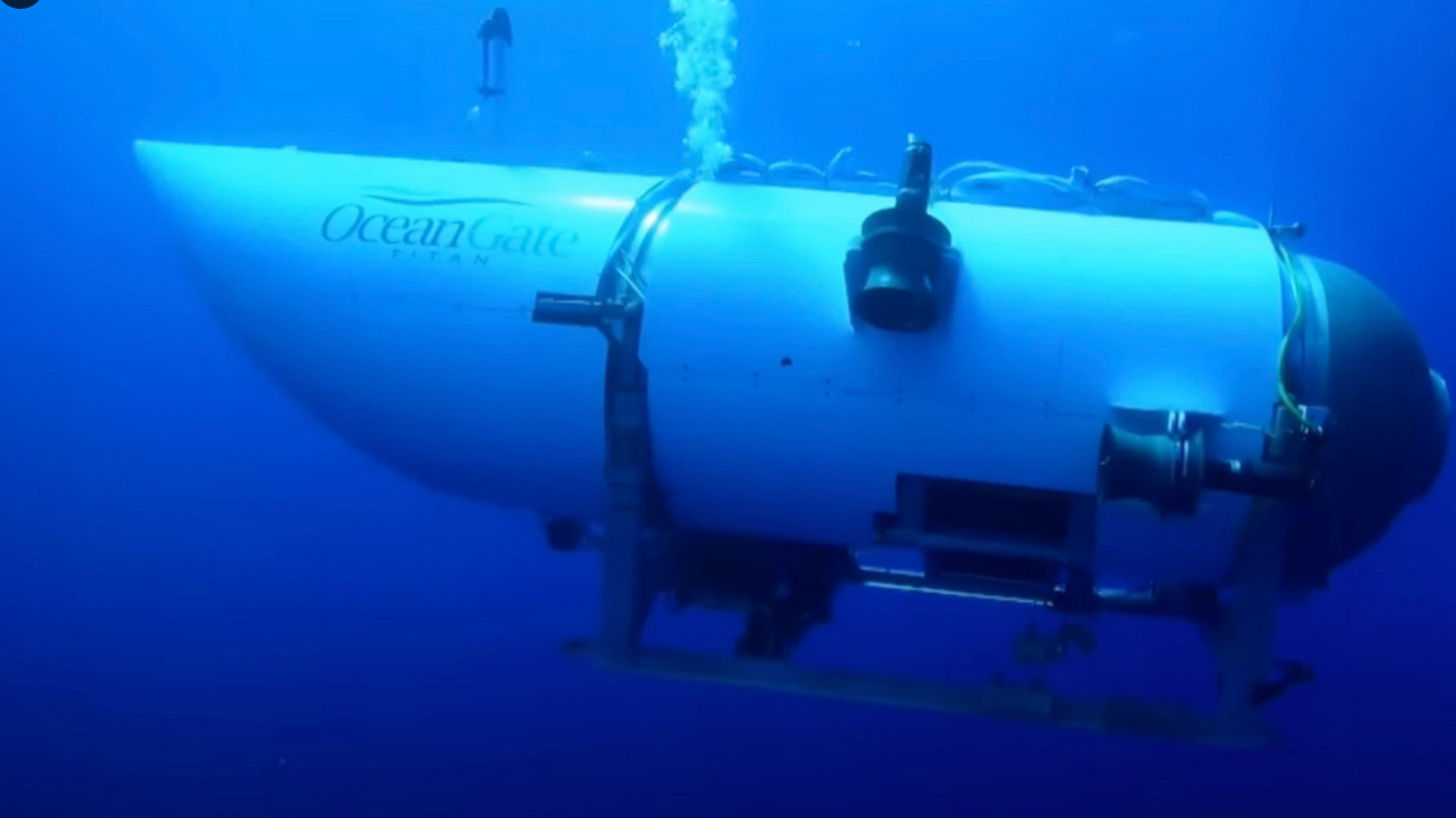Posted 21 июня 2023, 12:13
Published 21 июня 2023, 12:13
Modified 22 июня 2023, 06:16
Updated 22 июня 2023, 06:16

A hole, a fire, a Titanic trap: what happened to the Titan bathyscaphe?
Everyone who writes now about the search for «Titan», the first thing they mention is the amount of oxygen. But this is not the only danger that threatens the passengers of the underwater vehicle. The Guardian cites the opinions of experts who speculate what could have happened to the «Titan» and what it will lead to.
Hypothesis 1. Debris as a trap
The danger is the very burial place of the Titanic and its wreckage, which can become a trap for a bathyscaphe. «The character of the seabed is very undulating. The Titanic itself is lying in a trench. There is a lot of garbage around,» Chris Parry, a retired rear admiral of the British Royal Navy, described the problems of the area in an interview with Sky News. According to the instructions, during the descent, the device had to keep a decent distance from the sunken ship, but strong undercurrents could knock it off course. In addition, ocean debris like lost fishing nets and similar drifting materials could interfere. If the Titan is really entangled or stuck in the wreckage, there is little the passengers can do from the inside to free the vehicle.
Hypothesis 2. Unreliable housing
Judging by the timing, something happened to the bathyscaphe even before it approached the Titanic. According to the plan, the descent was supposed to take two hours (several more were planned to be spent on studying the ship and two on ascent). However, the connection was interrupted after 1 hour and 45 minutes. At this time, according to estimates, the device should have been at a depth of about 3,500 meters.
Submarines at such depths are subjected to monstrous water pressure — about two tons per square inch of area, and the hull should have been able to withstand it. According to OpenGate, the innovative material from which the «Titan» was created — the carbon fiber of the body connecting two domes made of titanium composite — is able to withstand a dive of 4,000 meters. For safety reasons, the bathyscaphe is also equipped with a monitoring system: when there is an abnormal load on the hull, it signals passengers about the problem in real time.
However, according to experts, today the standard materials for the construction of deep—sea vessels are steel or titanium. Both metals are guaranteed to be able to withstand pressure at great depths. As for carbon fiber, it is considered an untested material, which, if destroyed at depth, can lead to catastrophic consequences.
Hypothesis 3. Communication system failure
The communication of the Titan with the support ship, which is located on the surface, was to be carried out via the acoustic communication line USBL (ultra-short baseline), which implies the exchange of short text messages.
This is not the only communication system that exists on submarines. Some deep-sea vehicles with a crew are also equipped with an underwater acoustic beacon, which regularly signals the ship about its location and has an independent power source. This is a backup option in case of a failure of the main power supply: even if this happens, the beacon will continue to work, allowing the surface ship to track the bathyscaphe.
According to reports, the Titan did not have an acoustic beacon. CBS journalist David Pogue writes that last year, when he watched the Titan dive from the escort ship, because of the missing connection, the bathyscaphe could not be detected for 5 hours, and OpenGate employees mentioned during the search that it would not be superfluous.
Hypothesis 4. Difficulties of searching in the ocean
If all the electronics on board were disabled for some reason and the Titan could not get into radio contact, it had to dump ballast, float up and drift waiting for rescuers. The problem is that a bathyscaphe measuring about 7 meters in the ocean is a needle in a haystack, and even all the planes alerted are not able to comb the space of 20,000 square kilometers. At the same time, it is impossible to get out from the inside: the bathyscaphe is sealed on the outside with a system of locks, and passengers can only wait for outside help.
Hypothesis 5. Fire
The fire in the submarine spreads especially quickly because the air is enriched with oxygen. Because of this, even cosmetics based on liquid paraffin, an oil refining product, are prohibited for participants of deep-sea dives. If a fire occurs, the cabin can quickly smoke. But even in this case, the crew has a chance for an emergency lift.
Hypothesis 6. Power failure
Another serious threat. If all the power supplies on the Titan failed, the temperature on board would quickly drop to -4 degrees Celsius.
Hypothesis 7. The hole
The most terrible, but also the most probable cause of the disappearance. «If something has happened, there is a high probability that something very bad has happened,» says Stefan Williams, professor of marine robotics at University of Sydney. — If the device fails under high pressure, it resembles the explosion of a small bomb. There is a danger that all security systems will fail in the process.» But in this case, the signals would be picked up by military hydrophones — devices for receiving sound and ultrasound under water, which are dotted with the World Ocean.